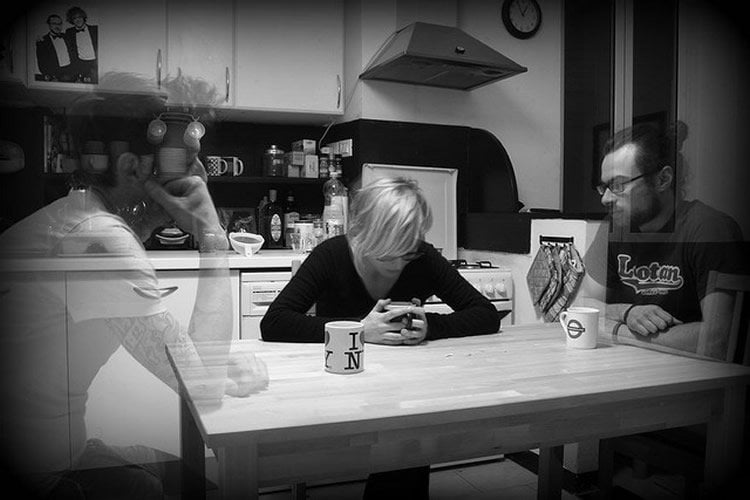A new study from the Institute of Psychiatry, Psychology & Neuroscience (IoPPN) at King’s College London sheds light on why people with schizophrenia misinterpret social cues in others, often leading to unpleasant paranoid and persecutory thoughts.
Insights from this research, published in Psychological Medicine, could help develop psychological interventions to assist people with schizophrenia to interpret social cues, which might also improve their symptoms.
The researchers studied the behaviour of 54 participants, including 29 people with schizophrenia, as they viewed the body position and gestures of an actor on a silent video clip. These included gestures such as putting a finger to the lips to indicate ‘be quiet’ or incidental movements such as scratching an eye.
They found that patients with schizophrenia are able to interpret meaningful gestures and incidental movements as accurately as healthy subjects. However, when the direction of the gestures was ambiguous (i.e. not obviously directed at or away from them), they were much more likely to misinterpret the gestures as being directed towards them.
According to the researchers, this could indicate an increased tendency to self-infer these ambiguous social cues or to ‘hyper-mentalise’, whereby intent is falsely inferred from the actions of others. Both of these misinterpretations could underpin the incidence of paranoid thought experienced by patients with schizophrenia, suggest the study authors. The patients’ confidence in their interpretation was found to be strongly associated with their propensity to experience hallucinatory symptoms.
Professor Sukhi Shergill from the Department of Psychosis Studies, said: ‘Humans are social beings, often finding joy in interacting with others. While most attention is on talking with each other, non-verbal behaviour such as gestures, body movement and facial expression also play a very important role in conveying the message.

‘However, the message being conveyed is not always clear, or perceived as a positive one, and an extreme example is evident in patients suffering from schizophrenia who show a strong tendency to misinterpret the intentions of other people in a malevolent manner.
‘Our study offers a basis for psychological interventions aimed at improving gestural interpretation. It could also provide guidance for health professionals and carers on how to communicate with patients who have schizophrenia, in order to reduce misinterpretations of non-verbal behaviour.’
Professor Shergill added: ‘The recent advent of adaptable virtual-reality technology provides a means of investigating the psychological effects of gestural communication with greater flexibility, which may prove a boon for our future understanding of social deficits in schizophrenia.’
Source: Jack Stonebridge – King’s College London
Image Source: The image is credited to Marco Castellani and is licensed CC BY-SA 2.0
Original Research: Abstract “You looking at me?: Interpreting social cues in schizophrenia” by T. P. Whitea, F. Borgan, O. Ralley and S. S. Shergill in Psychological Medicine. Published online September 4 2015 doi:10.1017/S0033291715001622
Abstract
You looking at me?: Interpreting social cues in schizophrenia
Background Deficits in the perception of social cues are common in schizophrenia and predict functional outcome. While effective communication depends on deciphering both verbal and non-verbal features, work on non-verbal communication in the disorder is scarce.
Method This behavioural study of 29 individuals with schizophrenia and 25 demographically matched controls used silent video-clips to examine gestural identification, its contextual modulation and related metacognitive representations.
Results In accord with our principal hypothesis, we observed that individuals with schizophrenia exhibited a preserved ability to identify archetypal gestures and did not differentially infer communicative intent from incidental movements. However, patients were more likely than controls to perceive gestures as self-referential when confirmatory evidence was ambiguous. Furthermore, the severity of their current hallucinatory experience inversely predicted their confidence ratings associated with these self-referential judgements.
Conclusions These findings suggest a deficit in the contextual refinement of social-cue processing in schizophrenia that is potentially attributable to impaired monitoring of a mirror mechanism underlying intentional judgements, or to an incomplete semantic representation of gestural actions. Non-verbal communication may be improved in patients through psychotherapeutic interventions that include performance and perception of gestures in group interactions.
“You looking at me?: Interpreting social cues in schizophrenia” by T. P. Whitea, F. Borgan, O. Ralley and S. S. Shergill in Psychological Medicine. Published online September 4 2015 doi:10.1017/S0033291715001622






